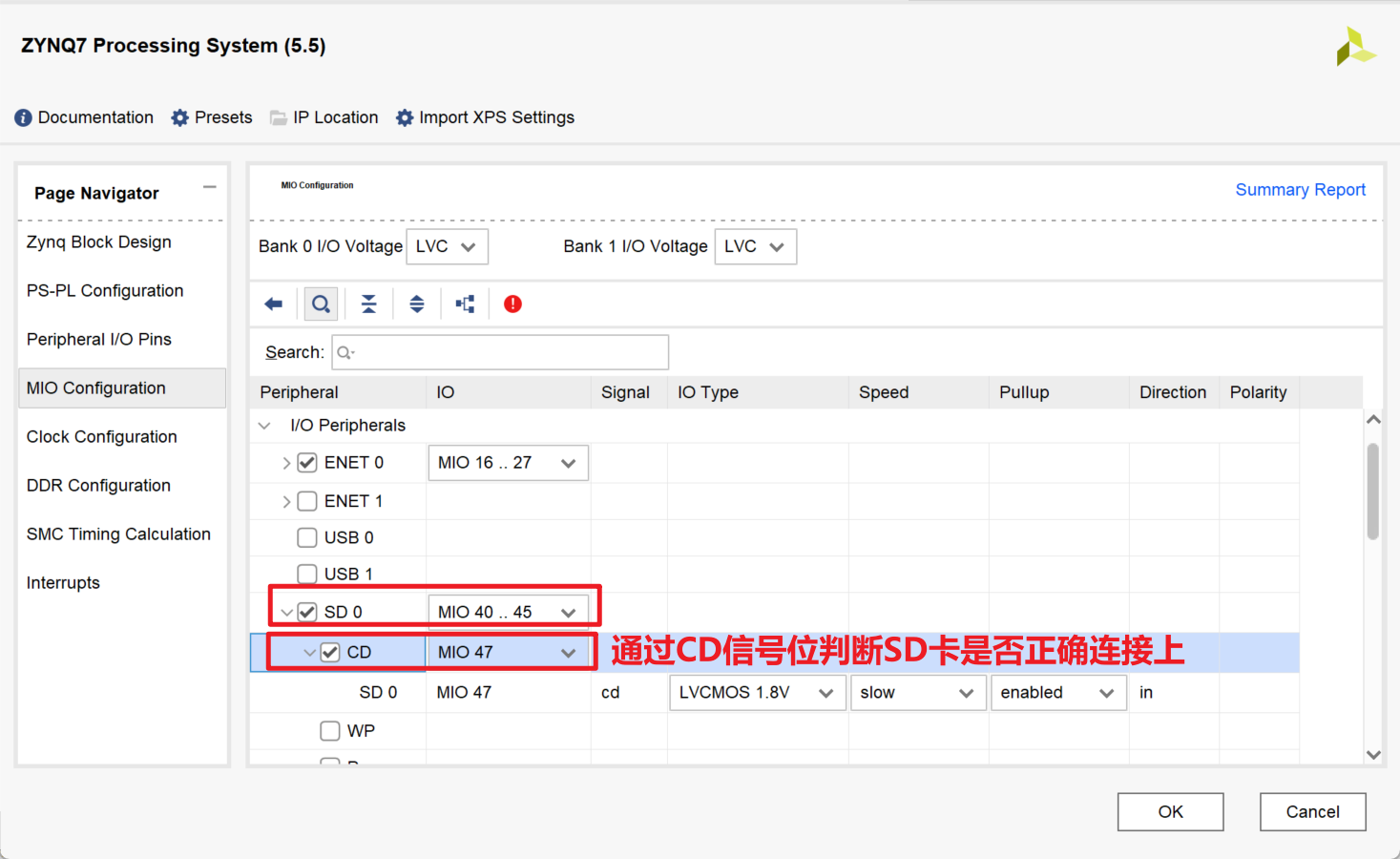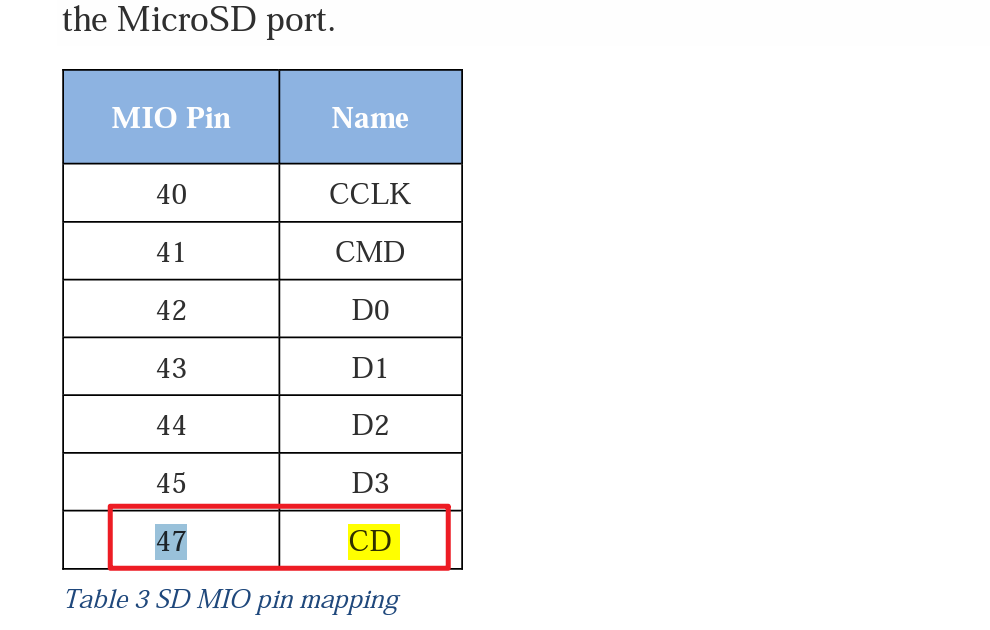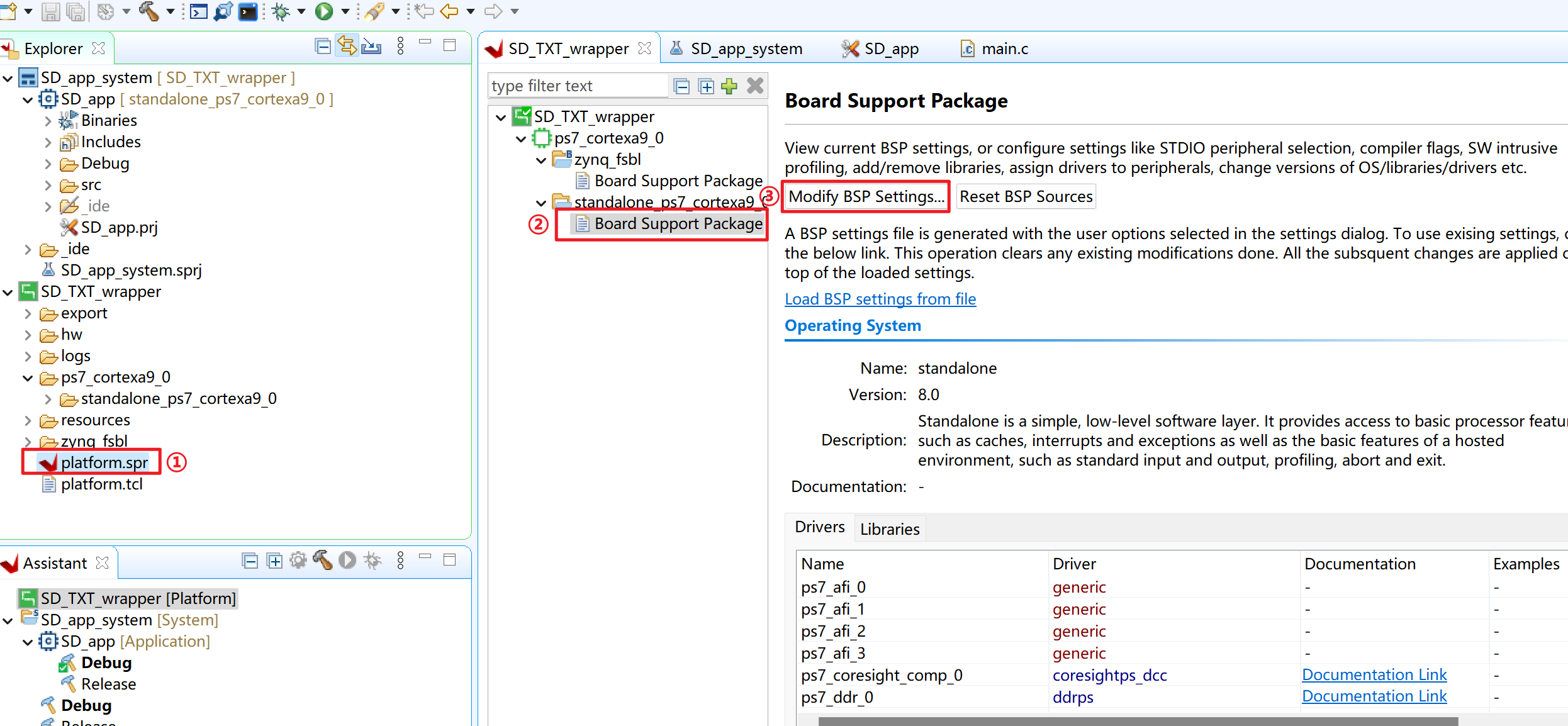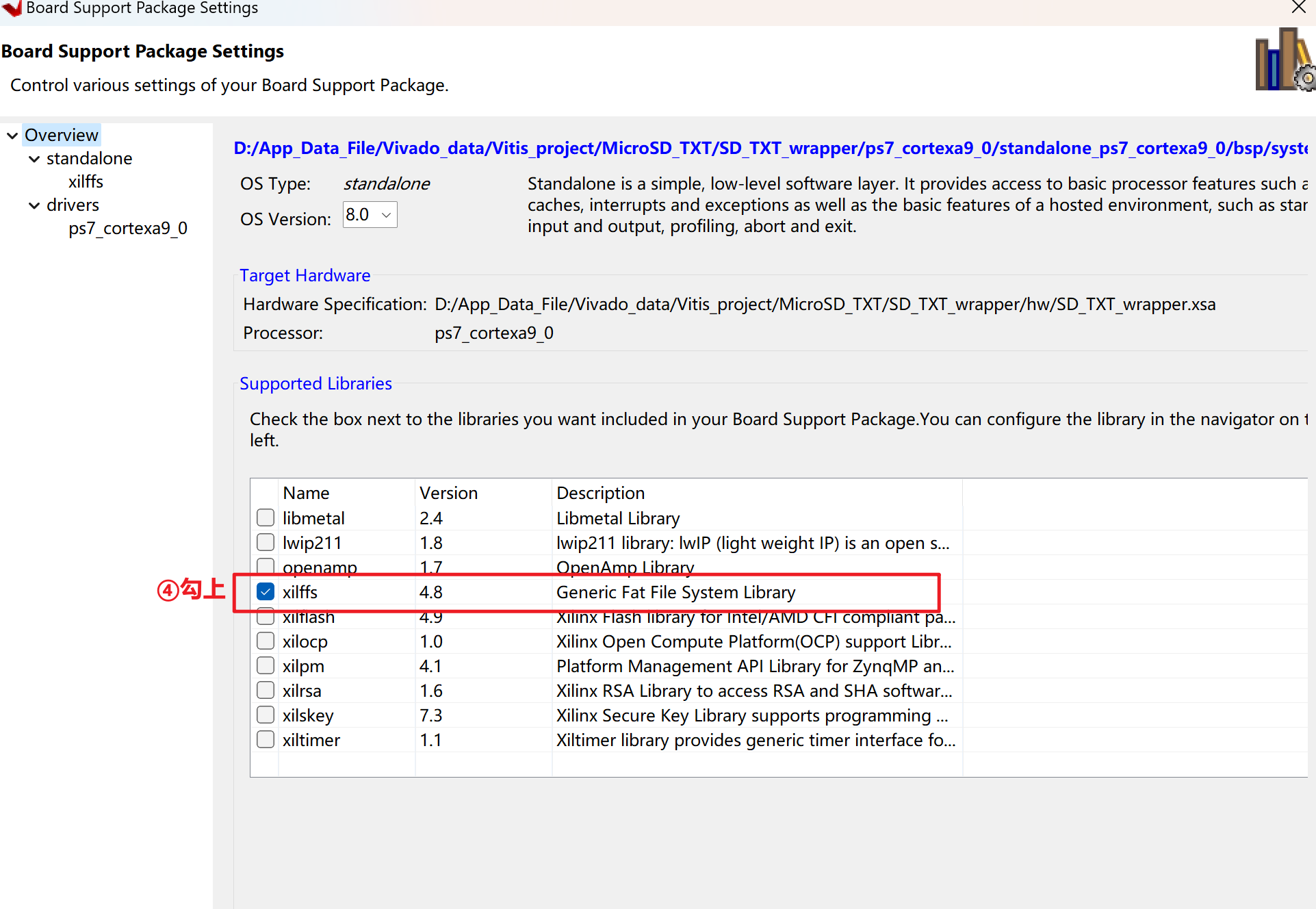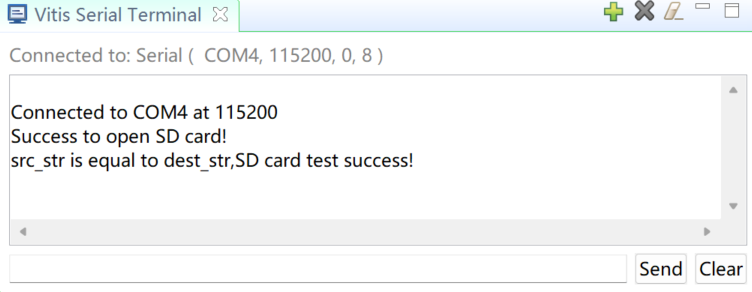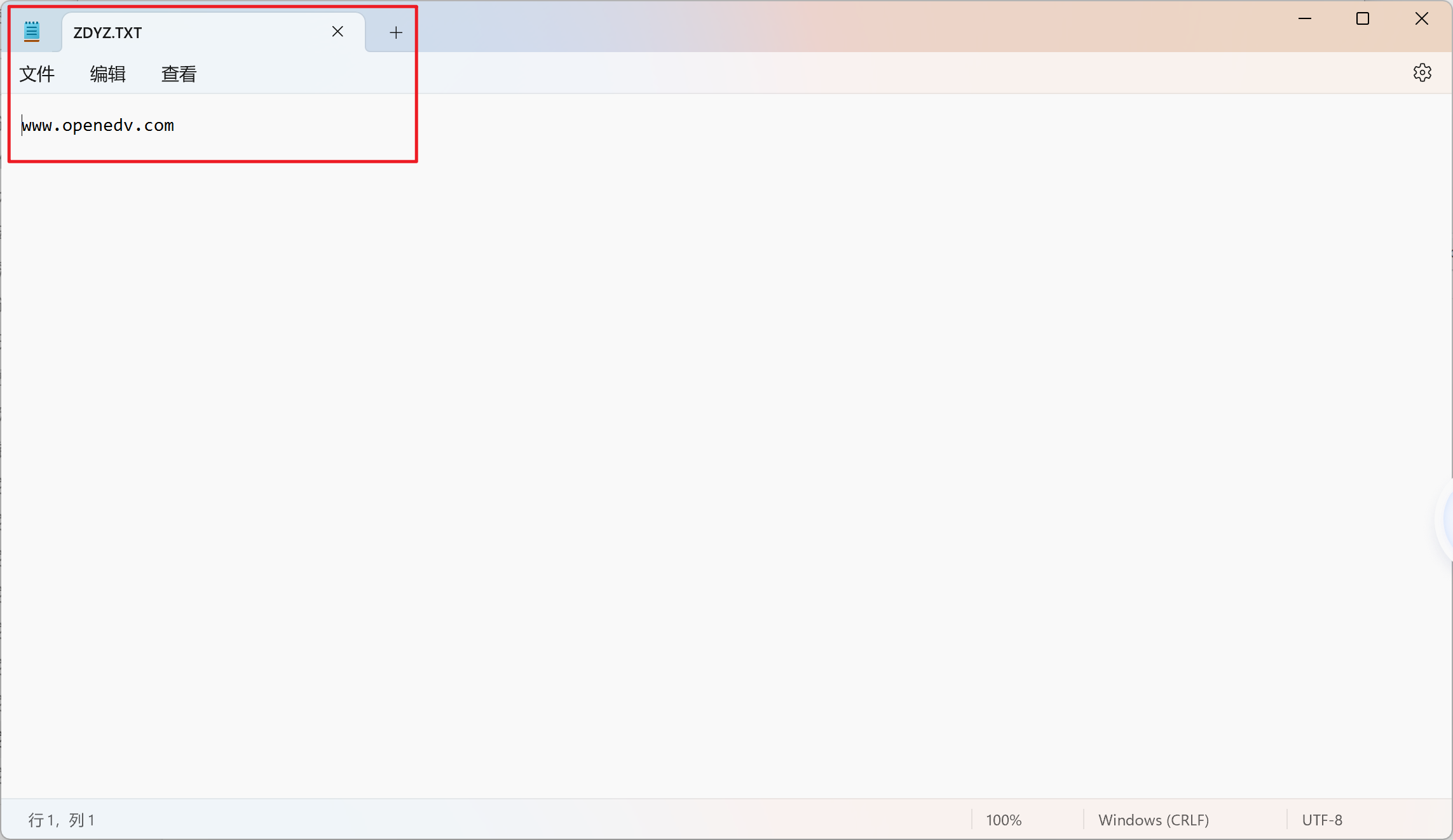1
2
3
4
5
6
7
8
9
10
11
12
13
14
15
16
17
18
19
20
21
22
23
24
25
26
27
28
29
30
31
32
33
34
35
36
37
38
39
40
41
42
43
44
45
46
47
48
49
50
51
52
53
54
55
56
57
58
59
60
61
62
63
64
65
66
67
68
69
70
71
72
73
74
75
76
77
78
79
80
81
82
83
84
85
86
87
88
89
90
91
92
93
94
95
96
97
98
99
100
101
102
103
104
105
106
107
108
109
110
111
112
113
| #include "xparameters.h"
#include "xil_printf.h"
#include "ff.h"
#include "xdevcfg.h"
#define FILE_NAME "ZDYZ.txt"
const char src_str[30] = "www.openedv.com";
static FATFS fatfs;
int platform_init_fs()
{
FRESULT status;
TCHAR *Path = "0:/";
BYTE work[FF_MAX_SS];
status = f_mount(&fatfs, Path, 1);
if (status != FR_OK) {
xil_printf("Volume is not FAT formated; formating FAT\r\n");
status = f_mkfs(Path, FM_FAT32, 0, work, sizeof work);
if (status != FR_OK) {
xil_printf("Unable to format FATfs\r\n");
return -1;
}
status = f_mount(&fatfs, Path, 1);
if (status != FR_OK) {
xil_printf("Unable to mount FATfs\r\n");
return -1;
}
}
return 0;
}
int sd_mount()
{
FRESULT status;
status = platform_init_fs();
if(status){
xil_printf("ERROR: f_mount returned %d!\n",status);
return XST_FAILURE;
}
return XST_SUCCESS;
}
int sd_write_data(char *file_name,u32 src_addr,u32 byte_len)
{
FIL fil;
UINT bw;
f_open(&fil,file_name,FA_CREATE_ALWAYS | FA_WRITE);
f_lseek(&fil, 0);
f_write(&fil,(void*) src_addr,byte_len,&bw);
f_close(&fil);
return 0;
}
int sd_read_data(char *file_name,u32 src_addr,u32 byte_len)
{
FIL fil;
UINT br;
f_open(&fil,file_name,FA_READ);
f_lseek(&fil,0);
f_read(&fil,(void*)src_addr,byte_len,&br);
f_close(&fil);
return 0;
}
int main()
{
int status,len;
char dest_str[30] = "";
status = sd_mount();
if(status != XST_SUCCESS){
xil_printf("Failed to open SD card!\n");
return 0;
}
else
xil_printf("Success to open SD card!\n");
len = strlen(src_str);
sd_write_data(FILE_NAME,(u32)src_str,len);
sd_read_data(FILE_NAME,(u32)dest_str,len);
if (strcmp(src_str, dest_str) == 0)
xil_printf("src_str is equal to dest_str,SD card test success!\n");
else
xil_printf("src_str is not equal to dest_str,SD card test failed!\n");
return 0;
}
|
